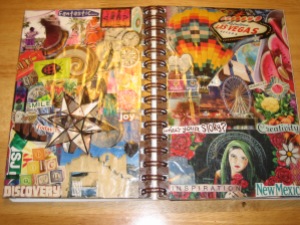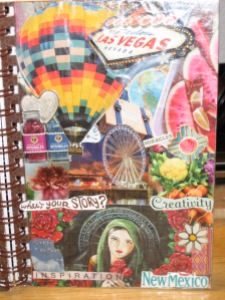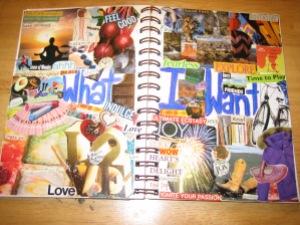
Are you still practicing physical distancing? Although many states are beginning to “open up,” physical distancing is still important to prevent the spread of COVID-19. According to the New York Times, the Trump
administration is privately projecting a steady rise in the number of coronavirus cases and deaths over the next several weeks. The daily death toll will reach about 3,000 on June 1, according to an internal document obtained by The New York Times, a 70 percent increase from the current number of about 1,750.
The projections, based on government modeling pulled together by the Federal Emergency Management Agency, forecast about 200,000 new cases each day by the end of the month, up from about 25,000 cases a day currently.
The numbers underscore a sobering reality: The United States has been hunkered down for the past seven weeks to try slowing the spread of the virus, but reopening the economy will make matters worse.
So yeah, it looks to me like things may go from bad to worse in the next few weeks unless folks continue to practice physical distancing.
You may wonder what exactly “physical distancing” (also know as “social distancing”) means. According to the Pomona Valley Hospital Medical Center and Los Angeles County Department of Public Health,
Physical distancing means staying home, avoiding crowds and staying at least 6 feet away from others whenever possible…
The less time that we spend within 6 feet of each other, and the fewer people we interact with, the more likely we are to slow the spread of COVID-19.
The aforementioned website gives the following advice for practicing physical distancing:
* Avoid any places where a lot of people are together such as gatherings, parties, worship services, and crowded parks.
* Work or study from home, if possible.
* Do not have visitors over or let your children have playdates.
* Avoid health care settings – unless you need services.
* Cancel non-essential health care appointments.
* Avoid non-essential travel.
* Avoid public transport, if you can.
* Avoid close contact with people – instead of shaking hands, come up with other ways to greet people that don’t involve any touching.

I know some of these recommendations are difficult for nomads to follow, especially working from home if we typically pick up odd jobs, seasonal jobs, or house and pet sitting jobs. Avoiding non-essential travel is difficult for us too, as non-essential travel is what we live for!
According to the CNN report “This Is Where All 50 States Stand on Reopening” by Alaa Elassar,
Stay-at-home or shelter-in-place orders around country are being lifted in some states.
However, please don’t take this as an indication that it is safe to go out in public and carry on with life as it once was. As Colorado governor Jared Polis warned people during a press conference the day the state’s “safer at home” order was modified (as reported on the aforementioned CNN webpage),

It’s not going to be life as normal.
Many states that are opening up still require nonfamily members to stay at least 6 feet apart. In many places, retail establishments must limit the number of people inside. Please, if you are going back out into the world, follow these requirements, and be cheerful with the employees who have to enforce these regulations.
If you are in a group that is more vulnerable to COVID-19, please consider staying home (whether your home is a sticks-n-bricks, a van, an RV, or some other rig) even if the state you are in lifts its stay-at-home or safer at home order. You are safer at home, even if the state doesn’t mandate that you stay there.
(If you’re wondering what groups are more vulnerable to COVID-19, William Kimbrough on the One Medical website lists the following groups as most susceptible to SARS-CoV-2:
* People aged 60 and older
*People with weakened immune systems due to chronic illness or medications, including people with autoimmune disease or transplants who are taking immunosuppressive drugs, people with AIDS
*People with serious long-term health conditions including diabetes, heart disease and lung disease such as emphysema and moderate asthma)
If you do decide to practice social distancing by staying away from people, what can you do to keep yourself entertained? Isolation is getting more difficult to deal with as we spend more time in one place, get less stimulation, and miss our friends and family. Here are a ten activities you can do alone to stimulate your mind and body and ward off cabin fever until it really is safe to be out in public again.

#1 Write a letter or a postcard. May 3-9 is National Postcard Month, so it’s the perfect time to write a card to a friend or other loved one. If you have more to say, go ahead and write a letter.
#2 Communicate by phone. If you don’t like to write, communicate with your friends and family by phone. You can call, text, or send photos on most mobile phones available today. Use video calls to take your communications up a notch; get recommendations from Dan Grabham‘s article “Best Free Video Calling Apps 2020: Keep in Touch with Friends or Colleagues” on the Pocket-lint website. Marco Polo lets you make videos and send them to the people you want to be in touch with, but you don’t have to engage in a live conversation.
#3 Learn something new or enhance your skills. In April I shared a huge list of “Free Things to Do While You Are Hunkered Down.” From learning a new language to learning to play guitar, this list is sure to give you some ideas of activities you can engage in to keep your mind sharp even if you you’re sitting home alone.
#4 Read up on life on the road. I put together “A List of Posts about Vandwelling, Camping, Boondocking, and Living Nomadically from the Rubber Tramp Artist Archives.” It’s a good place to find links to past articles that tell you everything I know about life on the road. You can also see what other people know about life on the road by reading their blogs. I give you some suggestions about blogs to read in my post “10 Blogs by Vandwellers, Nomads, Vagabonds, RVers, Travelers, and Drifters.”

#5 Keep a journal. You might feel as if nothing is happening in your life right now, but you might be fascinated to remember your thoughts and activities during this time of global pandemic one, five, ten, twenty, or thirty years down the road. Also, the Positive Psychology article “83 Benefits of Journaling for Depression, Anxiety, and Stress” by Courtney E. Ackerman, MSc. says,
Journaling can be effective for many different reasons and help you reach a wide range of goals. It can help you clear your head, make important connections between thoughts, feelings, and behaviors, and even buffer or reduce the effects of mental illness!
Certainly we could all use those benefits in these trying times!
#6 Practice gratitude. According to the Psychology Today article “Gratitude in a Time of Pandemic” by Zachary Alti LCSW,
Gratitude practice is not only important for making you feel better psychologically during this crisis, it can also help your physical health in response to respiratory infection and in general (especially in older adults who are in a higher risk category for COVID-19).

Whether you write down the things for which you are thankful in a special gratitude journal, jot down gratitudes on your calendar, note everything you appreciate in your regular journal, or simply count your blessings in the morning or at night, being thankful will make it easier to get through these difficult times.
#7 Meditate. The Psychology Today article “Meditation and Mental Health” by Samoon Ahmad M.D. states,
There are physical benefits [of meditation] that appear to be backed up by clinical evidence. According to these studies, meditation can help individuals sleep better, cope with some symptoms associated with mental disorders like depression and anxiety, reduce some of the psychological difficulties associated with chronic pain, and even improve some cognitive and behavioral functions.

If you’re not sure how to start your medication practice, see the extensive list from The Awake Network, “Free Online Meditation Resources for Times of Social Distancing / COVID-19.” Many of these teachings, practices, and other resources are being shared at no cost.
#8 Practice yoga, which is beneficial to both the body and mind. The Thrive Global article “Yoga Poses for Stress Relief During COVID-19” by Lindsay McClelland says,
As COVID-19 continues to spread we’ve all experienced change and stress in our lives…there are things we CAN do when confined to our homes, and luckily yoga is one of those things. In addition to being a form of exercise that doesn’t take up much space or equipment, there are specific poses that can help reduce stress in the mind and the body.

If you find videos more helpful to learn how to move your body, try Daily Yoga Practice for Stay at Home Covid-19 Quarantine | Yoga with Melissa on YouTube.
#9 Spend some time in the sunshine. Even if you practice yoga or do other exercise inside your house, it’s important to get outside and get some sunshine too. In the article “Get Sunshine and Fresh Air While Sheltering in Place” on The Ohio State University Wexner Medical Center website, author Whitney Christian, MD points out
Direct sunlight is our bodies’ main source of Vitamin D, which has been known to help fight off osteoporosis, cancer and depression. Even just a few minutes of sun exposure each day can help increase your levels of Vitamin D…Taking advantage of sunlight can help ease muscle aches and cramps, strengthen our bones and improve our moods…Spending time in the sun also can help you recover faster from an illness or injury. Studies show that those exposed to more natural light have quicker recoveries and experience less pain than those exposed to artificial light.

#10 Take a hike. If you can safely go outside, seize the opportunity. In the American Hiking Society article “Hiking Responsibly: Frequently Asked Questions for Hiking During the Covid-19 Pandemic” explains,
spending some time outdoors every day (we recommend at least 10 minutes) is an excellent way to take care of your mental and physical health always, especially now.
If you live in a rural area, you might have abundant access to open space and trails. In that case, if the park or trail you want to use is open, not crowded, and within a quick drive of your home (so that you don’t have to stop for gas, restroom breaks, supplies, etc.), then, yes, visiting such places for a day hike is fine as long as you practice strict social distancing and are following the guidelines of your local government and the federal, state, or local land manager. However, right now, we can’t risk diverting emergency medical care to wilderness injuries, so we urge that you only take an easy day hike in the front country.
Avoid parks or trails that have become crowded, even if the area is officially open. If the parking lot is crowded, there are already too many people there. Turn around and find another location or go home. Not only does crowding make it impossible to follow social distancing, but it puts extra wear and tear on trails and other park infrastructure at a time when volunteer crews cannot be operating.
I hope these suggestion help you continue to practice physical distancing as long as it may be necessary for you. Please keep yourself and your loved ones safe. Stay home until the danger has passed.
If you found this post helpful, I’d love your support! Hit the donate button in the toolbar to the right or go to Patreon to become my patron.






